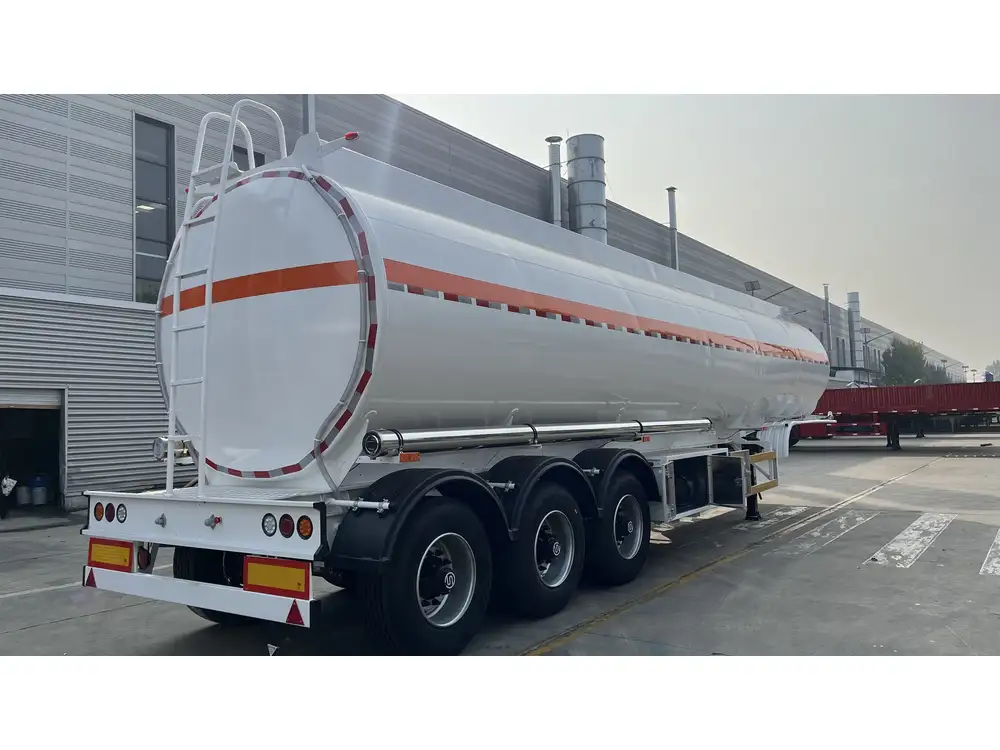When navigating the complex logistics of transportation, understanding the weight of an empty semi-trailer is critical for fleet managers, operators, and logistics coordinators. This knowledge impacts load capacity, compliance with weight regulations, and overall vehicle performance. In this detailed exploration, we aim to provide comprehensive insights into the factors influencing the weight of an empty semi-trailer, various models available, and how these nuances can affect operations.
1. Factors Influencing the Weight of an Empty Semi-Trailer
1.1 Design and Material
The weight of an empty semi-trailer can vary significantly based on its design and the materials used in its construction. Common materials include:
| Material | Benefits | Weight Characteristics |
|---|---|---|
| Steel | Strong, durable | Heavier, typically increases overall weight |
| Aluminum | Lightweight, corrosion-resistant | Reduces overall weight |
| Composite | Lightweight | Varies based on specific construction, often lighter than steel |
Choosing the right material is essential for specific operational needs, and manufacturers are constantly innovating to optimize weight without sacrificing strength.

1.2 Trailer Type
The type of trailer directly affects its weight. Here’s a breakdown of common trailer types and their general empty weights:
| Trailer Type | Typical Empty Weight Range | Usage |
|---|---|---|
| Flatbed | 10,000 – 12,000 lbs (4,500 – 5,400 kg) | General cargo, construction materials |
| Dry Van | 14,000 – 16,000 lbs (6,350 – 7,300 kg) | Enclosed cargo, retail goods |
| Refrigerated | 15,000 – 17,000 lbs (6,800 – 7,700 kg) | Temperature-sensitive products |
| Tanker | 12,000 – 15,000 lbs (5,400 – 6,800 kg) | Liquids and chemicals |
Each type has its unique structure and application, and knowing the weight helps in planning cargo loads effectively.
1.3 Axle Configuration
The axle configuration can also play a significant role in determining the weight of an empty semi-trailer. Generally, semi-trailers come in various axle configurations, each having distinct weight characteristics:
| Axle Configuration | Impact on Weight | Common Applications |
|---|---|---|
| Single axle | Lightest option | Specialized equipment |
| Tandem axle | Moderate weight | Most common for general freight |
| Tri-axle | Heaviest option | Heavy loads, oversize shipments |
A tri-axle configuration allows for a greater load distribution, which can help in complying with road regulations while maximizing load capacity.
2. Regulations and Compliance

2.1 Federal Weight Limits
Understanding federal weight limits is crucial for compliance and safety. The Federal Highway Administration (FHWA) outlines maximum weight limits for trucks and trailers in the United States, including:
- Gross Vehicle Weight (GVW): 80,000 lbs (36,287 kg) for most combination vehicles.
- Gross Axle Weight (GAW): Limits can vary based on axle configurations, with regulations stipulating max weights per axle to prevent roadway damage.
2.2 State-Specific Regulations
In addition to federal regulations, individual states may have specific weight limits.
State Examples:
| State | Maximum Allowable Weight | Note |
|---|---|---|
| California | 80,000 lbs (36,287 kg) | Applicable for interstate travel |
| Texas | 80,000 lbs (36,287 kg) | Specific permits needed for overweight loads |
| New York | 80,000 lbs (36,287 kg) | Requires special road permits for specific conditions |
Understanding these regulations is paramount for ensuring compliance and avoiding hefty fines associated with overloading.
3. Practical Implications of Empty Trailer Weight

3.1 Load Capacity Calculation
An empty semi-trailer’s weight directly affects its load capacity. Knowing both the empty weight and the maximum allowable weight helps determine how much freight can be safely loaded. For instance:
- Identify empty weight: 14,000 lbs (dry van).
- Know maximum weight: 80,000 lbs (federal limit).
Calculate load capacity:
[ \text{Load Capacity} = \text{Maximum Weight} – \text{Empty Weight} ] [ \text{Load Capacity} = 80,000 – 14,000 = 66,000 \text{ lbs} ]
This calculation is vital for optimizing payload efficiency and ensuring compliance with regulations.
3.2 Fuel Efficiency Considerations
The weight of an empty semi-trailer can significantly impact fuel efficiency. Heavier trailers reduce fuel efficiency due to increased rolling resistance and engine strain. In contrast, lighter alternatives improve fuel economy, which can lead to substantial cost savings over time.
Studies suggest that for every 1,000 lbs of weight, fuel efficiency can decline by approximately 0.5 to 1 percent, making weight optimization a focal point for operational strategies.
4. Cost Implications

4.1 Initial Purchase Price vs. Long-term Savings
When selecting a semi-trailer, operators often face a trade-off between initial purchase price and long-term operational costs. Here’s a comparative look:
| Trailer Material | Initial Cost | Long-term Fuel Savings | Durability |
|---|---|---|---|
| Steel | Lower | Higher fuel costs due to increased weight | Very durable |
| Aluminum | Higher | Significant savings on fuel and weight limit | Long-lasting, corrosion-resistant |
| Composites | Variable | Moderate to high savings depending on application | Innovative durability |
Choosing the right construction material is pivotal in aligning with your business’s operational budget and needs.
4.2 Maintenance Considerations
Heavier trailers may necessitate more frequent maintenance due to increased wear and tear on tires, brakes, and suspension systems. Light trailers can offer lower maintenance costs, but the material choice must also factor in long-term durability and potential repairs.
5. Conclusion
In summation, understanding the weight of an empty semi-trailer transcends mere curiosity; it becomes a linchpin for effective fleet management, regulatory compliance, and operational efficiency. By considering the materials used in construction, trailer types, axle configurations, and the implications of weight on load capacity and fuel efficiency, fleet operators can optimize their operations for enhanced profitability.
Equipped with this knowledge, stakeholders can make informed decisions when it comes to purchasing new trailers, ensuring their fleets remain competitive, compliant, and financially sound. Through strategic planning and an informed understanding of trailer weights, your operations can thrive while navigating the intricacies of the transportation industry.
In the constantly evolving world of logistics, knowledge is power – and in this case, understanding how heavy an empty semi-trailer is could very well be your competitive advantage.



